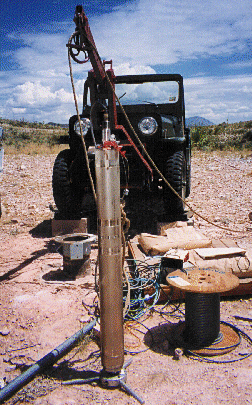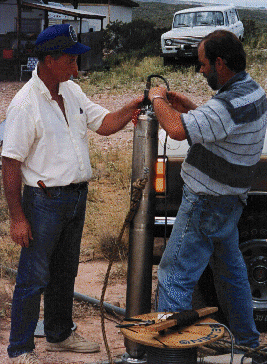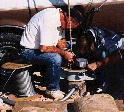

Originally designed to be installed in deep
(100 meter) boreholes, the KS36000 and subsequent
KS54000 are standard instruments used in sites
across the world. By installing them in deep
boreholes, the effect of wind noise is diminshed
at the longer periods. The consturctuion of a
deep borehole and subsequent instrument installation
is a complex expensive operation. If a site is
sufficiently quiet, or the longer periods are only
of secondary interest, then a shallow posthole
installation can provide substantial savings while
still producing an instrument superior to most
vault installations.

The posthole version of the instrument requires
none of the complex remote leveling mechanisms, does
not require a hole lock or the equipment to install
it. It also does not require a winch or
leasing expensive orientation equipment.
In the event there is a problem, pulling the instrument is
a simple operation that does not usually result in instrument
damage. In fact, this particular instrument was pulled for
testing and reinstalled within a morning.

Once the instrument is
in place in the borehole (in this case a 9" diameter 20 foot
deep cased hole), fine sand is poured around it to firmly
couple it to the surrounding rock. The instrument is mechanically
leveled from the surface (which sets a practical limit on the
depth of the posthole) with long rods. Once leveled, as observed
from the output, additional sand is added.